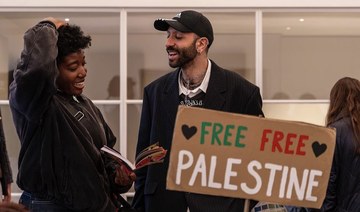When roadside billboards around Jeddah advertised one of the biggest art events in the Kingdom, one couldn’t have knowingly missed it. Given that all previous art weeks in the city were a hit, this year Jeddah Arts 21, 39 with attractions such as satellite dishes converted into art pieces, a life-sized kaleidoscope and hanging fiber glass leaves with acrylic, undoubtedly drew a discernibly massive crowd.
The Saudi Art Council (SAC) kickstarted its Jeddah Arts 21, 39 third annual exhibition under the theme ‘Earth and Ever After.’ The non-profit initiative ran a week-long art program and a set of art events featuring local and international artists.
Interestingly, this year’s exhibition inspiration for ‘Earth and Ever After’ comes from the Holy Qur’anic verses: “From this dust We created you, and in this We shall put you back, and from this, We shall raise you up once again.” (20:55) and “And Allah has made the Earth a spread for you, so that you may go about its broad ways.” (71:20).
The council is chaired by Princess Jawaher bint Majed bin Abdulaziz. Main curators heading the 2016 exhibition were Mona Khazindar and Hamza Serafi, who are also members of the Saudi Art Council.
“The aim of the exhibition is to reflect on humanity’s relationship with the Earth, to explore whether it is reconciled with each artist’s own personal bond and how an artist’s environment is inextricably bound to his sense of identity and roots,” said Khazindar.
The event features works of several contemporary Saudi and international artists. The exhibition saw a crowd of art aficionados and audiences that were engrossed in the manifested sculptures, paintings, photographs and art projects in the Saudi city of Jeddah.
Saudi artist Mohammad Haider’s artwork titled ‘Song of Campus’ spoke a thousand words. Made with tent canvas on wood outlining the world map, Haider’s piece had an amazing eye for detail.
Zahra Al-Ghamdi’s project titled ‘Cell of the Earth’ was an attention-grabbing piece of work made with a collection of cells taken from the Earth that represent a mixture of deep concepts forming the Earth’s core.
“My work is not a carbon copy of a real cell taken from Earth,” explains Al-Ghamdi. “It is an idea expressed through certain gestures, techniques and ores. My work is a symbolic depiction of these cells as they are analyzed by viewers’ naked eyes in hopes of discovering what Earth really is in their own perspective.”
A few masked men were miming and doing bits and pieces of silent drama every now and then during the proceedings of the event. Speaking to Anmar Baitalmal, we found out that a group of boys of the Humanity and Theater Club from University of Business and Technology call themselves the MACE, which is the abbreviation of mask and face. “We do theater and silent drama plays, which is something new in Saudi Arabia,” says Baitalmal, project manager of the club. “We do all these acts in silence because we want to send messages to people regarding social matters without having to say anything at all.”
Foreign art pieces showcased at 21, 39 this year included Italian-born Giovanni Ozzola’s famous chalk on stone artwork ‘Routes,’ Lebanese artist Ali Cherri’s lithograph and ink artwork ‘Paysages Tremblants’ and Syrian illustrator Boutros Al-Maari’s acrylic on canvas titled ‘Here is Damascus.’
Saddek Wasil created an interesting art piece with shopping carts portraying a symbol of consumerism and an essential necessity in modern man’s daily life. “Piling up shopping carts in a pyramid shape and adding the human element of emptiness signifies the economic fluctuations and the advent of commercial consumerism into social life which has led to the rise of other phenomena known as The Pyramid Principle,” expresses Wasil.
British/Palestinian artist Mona Hatoum had two fascinating pieces titled Coat Hanger and Plotting Table, both of which were on loan from a private art collector.
Although Hatoum’s Coat Hanger may seem like a whimsical piece at first glance, it is actually highly symbolic. A shredded map is assembled like a shopping bag and hung on a coat rack alongside a deformed coat hanger. “It transpires that this is an old map of Palestine, that features the Arabic names of Palestinian villages,” says Hatoum. “After Israel was established, the villages either disappeared or were recognized as entities by the Israelis. The piece is like an element of somebody who carries their identity or origins with them everywhere, like a shopping bag.”
Walking out of the exhibition territory, you bump into the eminent Homegrown Market, who played a pop-up gift shop for the 21, 39’s ‘Earth and Ever After’ exhibition. “We tried to stay within the theme of the exhibition, so a lot of products featured here are either art inspired or to do with the environment and are also environmentally-friendly,” said its founder Tamara Khadra.
Khadra’s platform was an inspiring one featuring organic and handmade products, promoting local and regional designers. “Although there is a lot of talent in the region, it’s either that most of them cannot afford to have their own stores or they don’t have the time or capability to run the store. So, we facilitate that for them.”
It didn’t stop there! The following day featured the Al-Hangar exhibition at Saudi Arabia’s historic area of Al-Balad and an exhibition at Tasami Gallery. Meanwhile, Athr Gallery presented two solo exhibitions namely ‘Show Me the Light’ by Palestinian artist Ayman Yossri Daydban and ‘The Whole Truth’ by renowned Lebanese/British artist Lawrence Abu Hamdan.
In the art series was a preview of ‘Izn Praise of Hands’ that was hosted by one of the main sponsors of 21, 39 program, Van Cleef & Arpels.
As part of the art week, SAC sponsored a tour of the Old town of Al-Balad where historic buildings, including Waqf Al-Khunji Al-Kabeer, are being renovated and converted to an arts and cultural center by the council.
Prominent Hijazi architecture fanatic Ahmad Sami Angawi collaborated with Athr Gallery to showcase his first solo exhibition titled, ‘Al-Mangour; Loved & Beloved’ in the city of Al-Balad. The exhibition shone light on the beauty of Al-Mangour, a forgotten Hijazi craft, through the documentation and analysis of the creation process.
A solo exhibition titled ‘The Everlasting Now’ by Emy Kat and curated by Hamza Serafi was the final exhibition in the series of art events. “21,39 is the highlight of the year for art lovers in Jeddah and presents a unique opportunity to showcase the work of today’s most talented artists in cooperation with leading art galleries in Jeddah,” said Serafi.
“The Saudi Art Council is a group of local art enthusiasts who contribute to the local community through the promotion of art and culture in Jeddah,” explains Mohammed Hafiz, Vice Chairman of SAC. “By organizing 21,39 we are enabling contemporary artists to present their creations to a wider audience than they would otherwise reach, while giving Jeddah’s art enthusiasts a whole week in which to enjoy and celebrate the universal language of art.”
Following last year’s success of 21,39 the council subsidized guided tours of the main exhibitions to around 5,000 students from 200 schools.
Commenting on the ‘Earth and Ever After’ exhibition theme, UBS — a partner of SAC, said “This year’s theme, the abundance and beauty of the earth, couldn’t be more timely. It invited us to reflect on humanity’s relationship with the Earth as well as how an artist’s environment is inextricably bound to a sense of identity and roots.”
—
Email: [email protected]
Jeddah Arts 21, 39: Man’s relationship with Earth in spotlight
Jeddah Arts 21, 39: Man’s relationship with Earth in spotlight
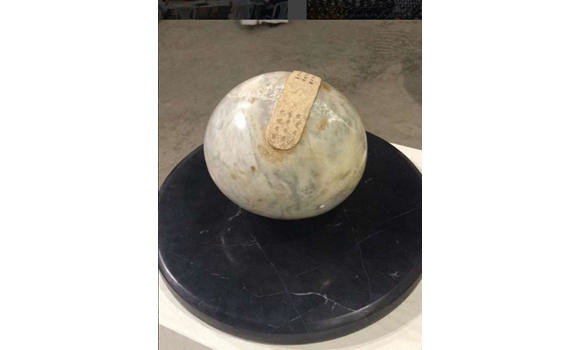
Speakers, headliners pull out of UK’s Great Escape festival over Gaza

DUBAI: Keynote speakers and headliners scheduled to take part in the UK’s annual Great Escape music festival in Brighton refused to appear at this year’s event due to the war in Gaza.
According to The Guardian, numerous acts withdrew due to a pro-Palestinian boycott targeting the event’s sponsorship by Barclays Bank. Campaigners allege that Barclays has increased its investments in arms companies that trade with Israel.
Bands Boycott Barclays (BBB), the organization spearheading the campaign, asserted that the bank was engaged in “laundering its reputation” through its association with the music festival, a claim that Barclays refutes.
A BBB spokesperson told the BBC that 163 acts, four showcases and two venues had pulled out of the festival.
The Great Escape is an annual music festival held in Brighton, showcasing emerging artists from around the world. It features hundreds of performances across various venues, along with industry panels and networking opportunities.
It is the event that has been key in launching the careers of artists such as Stormzy, AlunaGeorge, Fat White Family and Anna Calvi.
‘Material Woman’ exhibition in London creates synergy of Arab women’s fashion and art

- Curation tells a “story about how women use their hands to craft their destinies,” Shoucair says
LONDON: The worlds of fashion and art from Arab female creatives converged this week at the “Material Woman” exhibition in London.
The exhibition, held from May 17 to May 19 at Soho Revue, is the brainchild of the art collective Hayaty Diaries, in collaboration with the fashion platform and pop-up series 3eib.

Featuring an eclectic mix of sculptural art, mixed media, projection installations, fashion and jewelry, the exhibition explored craftsmanship and materiality.
“Each element came together to tell a cohesive and beautiful story about how women use their hands to craft their destinies and honor their heritages through both creative worlds of art and fashion,” Lebanese curator and Hayaty Diaries co-founder, Christina Shoucair, told Arab News.
The curatorial process began with the pairing of artists and designers, creating a harmony between the works.

Bahraini artist Zayn Qahtani’s shrine-like objects, featuring delicate ethereal drawings on date paper, explore themes of venerative mourning. These are paired alongside a series of rustic sculptures and draped garments by Egyptian designer Nadine Mos.
Lebanese artist Yasmina Hilal’s photo sculptures, which incorporate her distinctivve metalwork and soldering technique, are complemented by a curated display of contemporary silver and gold accessories by Celine Dagher, a Lebanese jewelry designer.
Meanwhile, Egyptian artist Hanya Elghamry examines the process of remembering by graphically recreating various details and narratives in her installation “Abandoned Projection.” Set as a backdrop against her floating “Tampered Redux” series, along with Moroccan designer Hanan Sharifa’s mesh and delicate dresses, the space offers visitors an immersive experience.
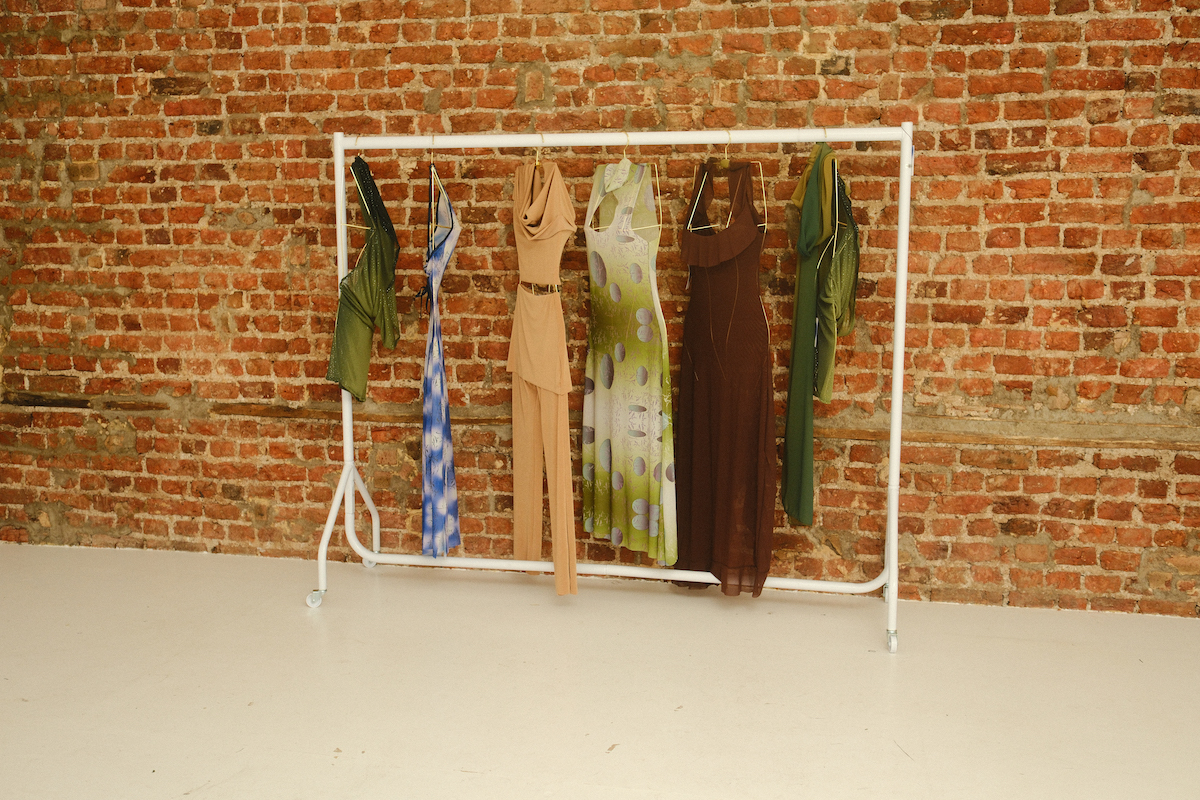
“Christina and Kinzy presented the vision for The Material Woman and I loved the idea of blending the worlds of fashion and art together and utilizing the theme of materiality as a vehicle of creative empowerment and liberation,” 3eib founder, Dania Arafeh, told Arab News.
Hayaty Diaries, which focuses on celebrating the artwork of Arab women, marked its debut last December with its inaugural exhibition, “Through Their Eyes: Perspectives Unveiled,” in the British capital.
“Our Hayaty Diaries journey has been incredible. We’ve had the privilege of meeting many creatives from the region and have felt the warmth and support of the community. We are immensely grateful for all the encouragement we have received along the way,” Egyptian-Saudi curator and Hayaty Diaries cofounder Kinzy Diab told Arab News.
The London-based collective is now preparing for its exhibition “Levitate,” which will run from June 6 to June 16 and center around themes of fantasy and imagination.
Hoor Al-Qasimi appointed artistic director of the Biennale of Sydney

DUBAI: The Biennale of Sydney announced this week that Emirati creative Hoor Al-Qasimi will become its artistic director for 2026.
The 25th edition of the biennale will run from March 7 to June 8.
Since its inception in 1973, the biennale has grown to become one of the longest-running exhibitions of its kind and was the first biennale established in the Asia-Pacific region.
Al-Qasimi created the Sharjah Art Foundation in 2009 and is currently its president and director. Throughout her career, she acquired extensive experience in curating international biennials, including the second Lahore Biennale in 2020 and the UAE Pavilion at the 56th Venice Biennale in 2015.
In 2003, she co-curated the sixth edition of Sharjah Biennial and has remained the director of the event since.
Al-Qasimi has been president of the International Biennial Association since 2017 and is also president of the Africa Institute. She has previously served as a board member for MoMA PS1 in New York and the UCCA Center for Contemporary Art in Beijing, among other roles.
She is also the artistic director of the sixth Aichi Triennale, scheduled to take place in Japan in 2025.
Saudi pop star Mishaal Tamer feels ‘honored and grateful’ ahead of sold-out London gig

- Singer tells Arab News his fans in the city have a special place in his heart but he owes his success to people all over the world who have embraced his music
- He says his debut album, “Home is Changing,” out in October, is a tribute to the changes and reforms that have swept through the Kingdom in recent years
LONDON: Saudi singer Mishaal Tamer said he feels honored to be performing his first headline show outside Saudi Arabia in London and is grateful to his fans there for their support.
Speaking to Arab News ahead of his sold-out gig on Friday at Camden Assembly, a live music venue and nightclub in Chalk Farm, Tamer said his fans in London will always have a special place in his heart.
“The people attending the show in London have been with me from before the starting line and I really appreciate that,” he said of the 220 people who will attend the event. “I will love those people forever and they will be in my heart forever.”
Tamer also thanked his fans in Saudi Arabia and elsewhere in the world, saying he owes his success as an independent artist to them.
“The kids that are back home and the ones abroad that have found me have been supporting me,” he said. “This would be impossible without them. I am grateful to the fans for listening to the music and sharing it.
He told how he was approached by two fans in a restaurant after arriving in the UK, which helped him realize how his profile was growing.
“One of them was Saudi, the other wasn’t,” Tamer said. “When I looked at that, it made me realize that not only was this bigger than I expected for me, as an artist, but that what we’re doing is bigger than me.”
His debut album, “Home is Changing,” is due for release in October and he said it is a tribute to the changes and reforms that swept through the Kingdom in recent years.
“There are so many opportunities that keep popping up, so many cool new things,” he added. “People have the freedom and creativity to make the world around them and the environment around them, to shape it into what they see in their heads.
“It feels almost like every other country is decaying whereas the Kingdom is growing and that feeling makes me proud.”
The evolution of Saudi Arabia “sets an example of always being hopeful for the future and having a positive attitude,” Tamer said. “And I think the optimism that we have right now in the Kingdom is a beautiful thing.”
Saudi filmmaker Abdulrahman Sandokji’s ‘Underground’ discusses the Kingdom’s music scene

- ‘Unfolding the unseen is my thing,’ says Abdulrahman Sandokji
DUBAI: “In film school, they tell you that your first film should be a documentary — train in a simpler form, then go to fiction,” says Saudi filmmaker Abdulrahman Sandokji. “So, naturally, I started with documentaries. But I got hooked.”
Over 15 years later, Sandokji still hasn’t moved on to fiction. Not that that’s an issue for him. His documentaries — produced by the company he founded, Basar Media — have proven immensely satisfying.
“A fiction film can take one or two years to shoot. I have no patience with waiting days and days to shoot one scene. I want things faster and more surprising,” he tells Arab News.

“And (documentaries) are honest. You’re talking about real stories. Unfolding the unseen is my thing, you know? I want to go into these deep places and show them to people,” he continues. “It’s a way to understand people, to really see people. To pick a flower from lots of beautiful gardens and plant them in your own garden. It’s more of a journey of discovery for me, you know? That’s what I love about documentaries.”
Sandokji’s breakthrough came with his 2014 film “Phosphine,” which he describes as a “Michael-Moore style” investigative documentary. It explored how the titular chemical — a potentially deadly respiratory poison — had been used (out of ignorance rather than malice) in homes to kill cockroaches, rats and other pests. While the actual occupants had been told to leave their apartments for five or six days, their neighbors were not, and the odorless gas killed them.
Sandokji put his documentary up on YouTube. It got 5 million views in five days, he says, adding that, at the time, he and his colleagues were delighted if they got 100,000 views on any of their videos, because they “weren’t funny — they weren’t comedies.” But “Phosphine” ended up making a difference to society, as well as to Sandokji’s career.
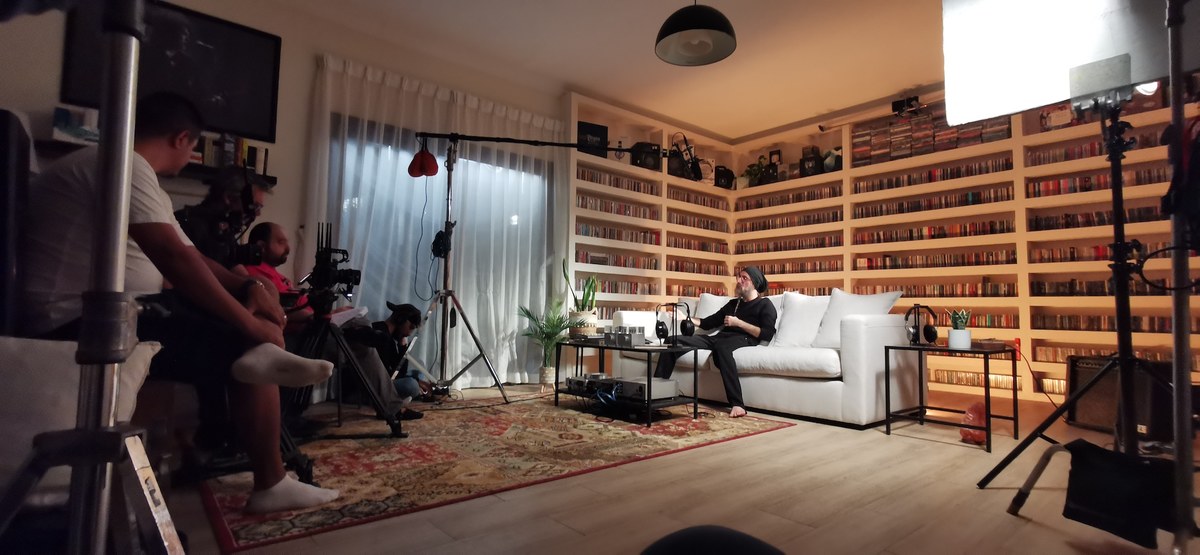
“We were on TV shows and talk shows — we were overwhelmed. Lots of social movement happened and governmental sectors held very urgent meetings about this substance. The Ministry of Health set up a hotline about it,” he says. “That was when I thought, ‘OK. Maybe this is your thing. Being a voice for those who want their voices to be heard.’”
Unlike “Phosphine,” Sandokji’s latest doc, “Underground,” is not a “tragic story.” But, once again, it was a “journey of discovery” for him — one that delves into the Kingdom’s burgeoning alternative music scene.
The idea — as for many of his films — was not Sandokji’s own. “When I analyze myself, I’m more of a person who receives an idea and then gets to enlarge it,” he says. “When I generate an idea myself, people go, ‘Mmm. No.’” He laughs. “They’ll go, ‘How about this idea instead?’ I’m like the gas — just throw the spark on me and I’ll explode, you know?”
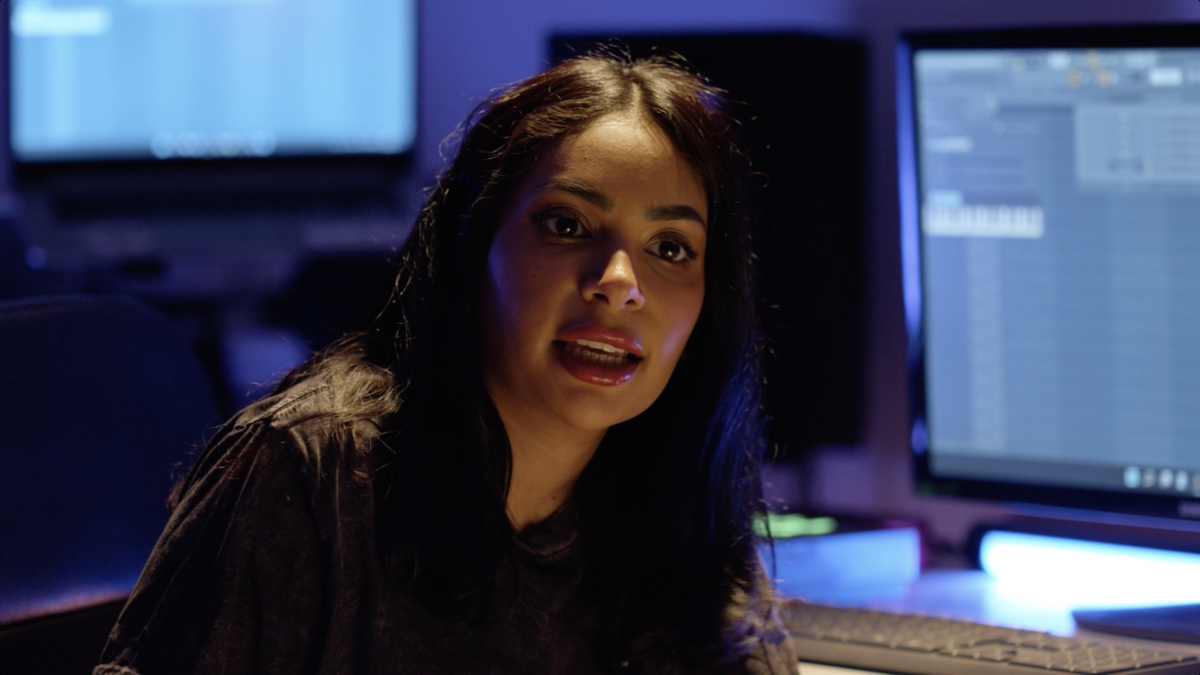
The “spark” for “Underground” came from a friend, Tamer Farhan. “He’s passionate about underground music. He knows all these artists,” Sandokji says. “And he opened the window to me and said ‘Come and have a look.’”
What Sandokji found was a wealth of talent and experience that has largely gone unnoticed in Saudi Arabia — understandably, given that until recently live music was largely outlawed in the Kingdom, and music that wasn’t commercial Khaleeji pop or classical Arabic fare was frowned upon.
“These people are good people,” says Sandokji. “Over the years people talked about the music underground as this place with drugs and all this prohibited stuff. But no. They are nice. They have feelings. They love their music and they’re passionate and they’re kind.”
That passion shines through in “Underground,” whether from veterans such as metal band Wasted Land’s frontman Emad Mujallid or relative newcomers such as DJ Cosmicat (Nouf Sufyani) and Salma Murad. All the artists involved are given the opportunity to discuss their craft and love for music in depth, and to play some of their music live.
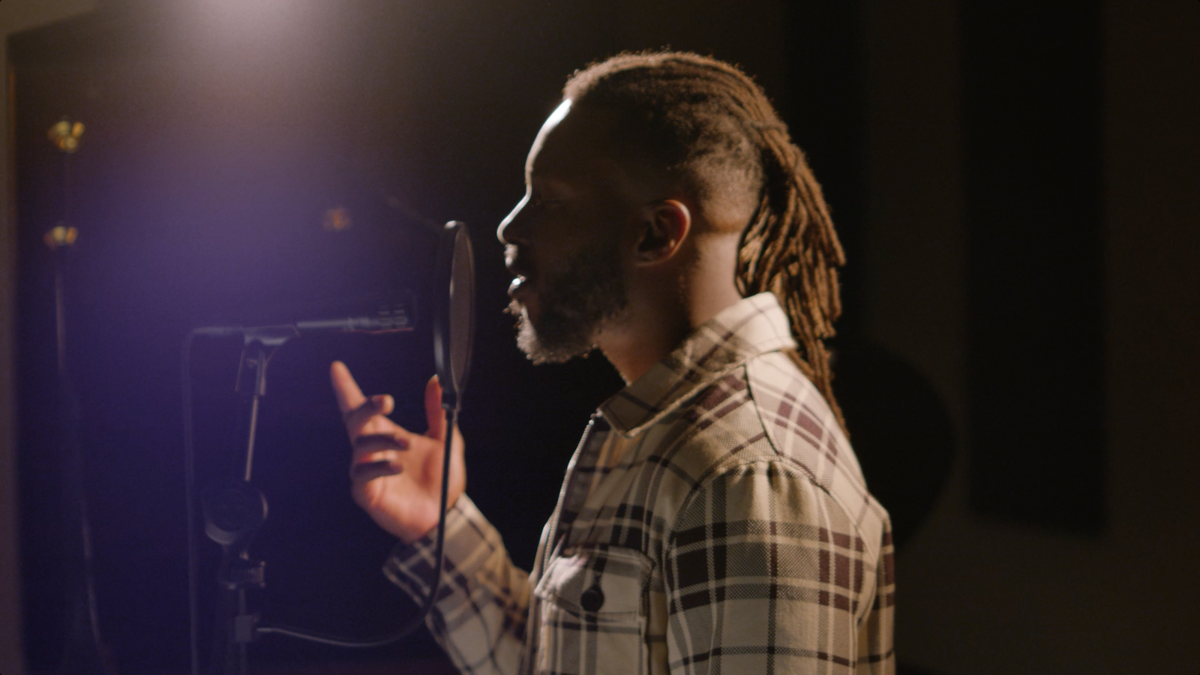
“(The songs) are not recorded and synced,” Sandokji says. “I wanted to show the audience how talented they are.”
So far, that audience is whoever attended the premiere on the opening night of the Saudi Film Festival on May 2 — another landmark for Sandokji, he explains. “Usually they choose fiction films — good fiction films — for the opening. I was always watching them thinking ‘When am I going to make a movie that could be screened in the opening? I’m a documentary maker, nobody would give me that chance.’ But it happened.”
And he believes “Underground” has the potential to grab international attention. It’s already been submitted for consideration at several large festivals, but the main aim since he started shooting it in 2022, Sandokji happily admits, has been to get the film on Netflix. There are also discussions underway about turning it into a TV series.
“It’s something people will want to know more about, I think,” he says, before citing the words the movie concludes with, when Murad is discussing what music means to her: “It’s powerful. It’s beautiful.”
“When Salma said that, I had goosebumps,” Sandokji says. “I thought, ‘Yes! These are the words the movie has to end with.’ Music is powerful; it can make you very strong, it can make you very weak… it’s magical.”







